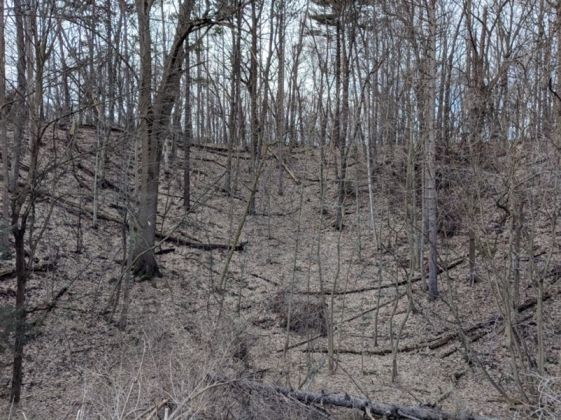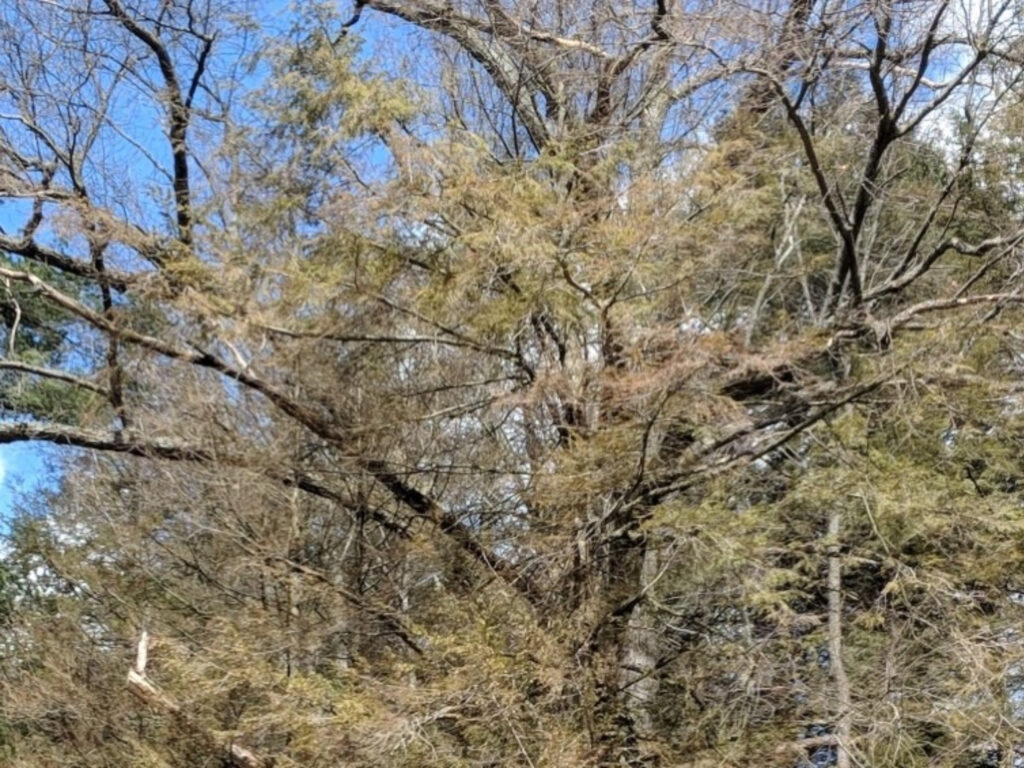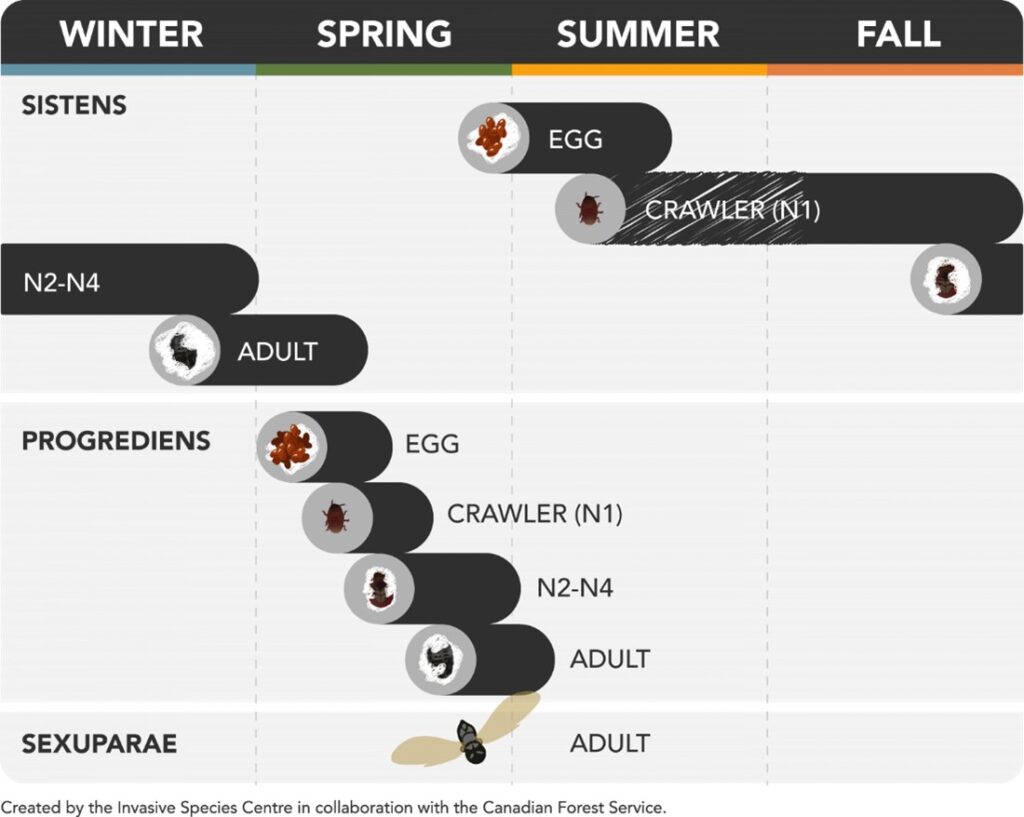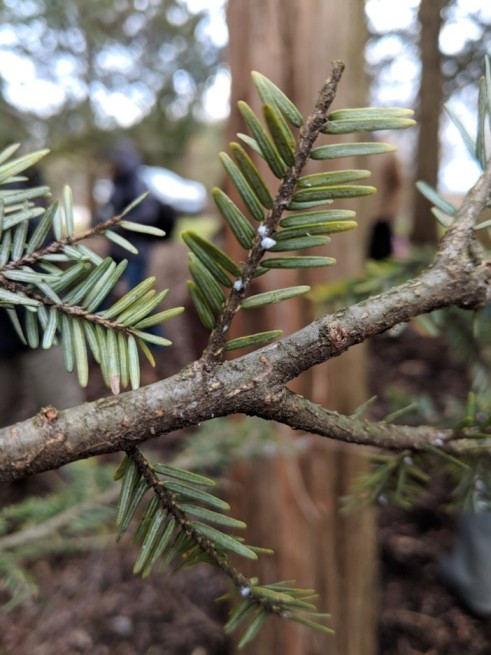On August 10, 2022, the Canadian Food Inspection Agency confirmed the presence of hemlock woolly adelgid (HWA) near Grafton, Ontario. A small population of HWA was first detected in the province in Etobicoke in 2012 but was eradicated shortly after its discovery. However, since then, HWA has also been discovered in Niagara Falls, Wainfleet, and Fort Erie. The Grafton discovery adds to the growing concern for hemlocks in Ontario.
HWA is an invasive aphid-like insect that attacks and kills hemlock trees by feeding on nutrient and water storage cells at the base of needles. This leads to premature needle loss, dieback of twigs and branches, and eventually death within 4 to 15 years (depending on factors such as age, climate, and stress). Eastern hemlock is the primary host of HWA in eastern Canada and can be found from Nova Scotia to northwestern Ontario.


Hemlocks are important foundation species that impact communities and increase biodiversity in an ecosystem. For instance, many animal species rely heavily on hemlock stands for resources like food and shelter (e.g., nesting and roosting sites). They also provide valuable thermal cover for animals, such as deer and birds, during Canada’s cold, harsh winters. Hemlock trees also provide important shade in riparian areas, which regulates and maintains water temperatures. Their absence would be felt by brook trout and other native fish species, impacting angling activities.

Loss of eastern hemlock could also change an ecosystem’s energy inputs and nitrogen cycling, which can negatively impact communities of flora and fauna. This vulnerability that HWA poses can make forests more susceptible to other invasives, like dog-strangling vine and garlic mustard, exacerbating the harm done to an already damaged hemlock forest.
The impacts of HWA can hit closer to home, too. Hemlocks provide shade, thermal protection, and aesthetics in residential areas, and their death could negatively affect property values. HWA’s damage to foliage and fish can also impact fishing, hiking and other weekend activities. Furthermore, eastern hemlock is processed for use in general construction or as pulp. While economic value of hemlock to the forest industry is not as high as other tree species, interruptions to this industry can cause local economic stress.
Currently, there are import and domestic movement requirements for all hemlock species to prevent the introduction and spread of HWA. You can find a list of most recent regulations here. As of 2022, there are movement restrictions in place on hemlock materials for Niagara Falls, Fort Erie, and Wainfleet in Ontario.
Early detection of HWA is necessary for successful containment and management. In addition to movement restrictions and other requirements, individuals have an important role in taking action to keep our Canadian hemlocks healthy.
Prevent the spread of HWA by monitoring local hemlock stands for signs and symptoms of HWA. In August and September, the main symptom of HWA is foliage discolouration of needles to a grey/brown colour. From November to May, white “woolly” eggs sacs appear at the base of hemlock needles on most recent twigs. If you notice these signs and symptoms of HWA, report sightings to https://www.invasivespeciescentre.ca/report-a-sighting/ or https://www.eddmaps.org/.

Only burn firewood where you have bought it. The movement of firewood is a pathway of spread of HWA (and a wide range of other invasive forest pests).
Apart from being spread to new locations by humans and wind, HWA is also transported by birds; for this reason, avoid placing bird feeders near hemlock trees.
Stay informed and do your part to help protect your community’s hemlocks.
